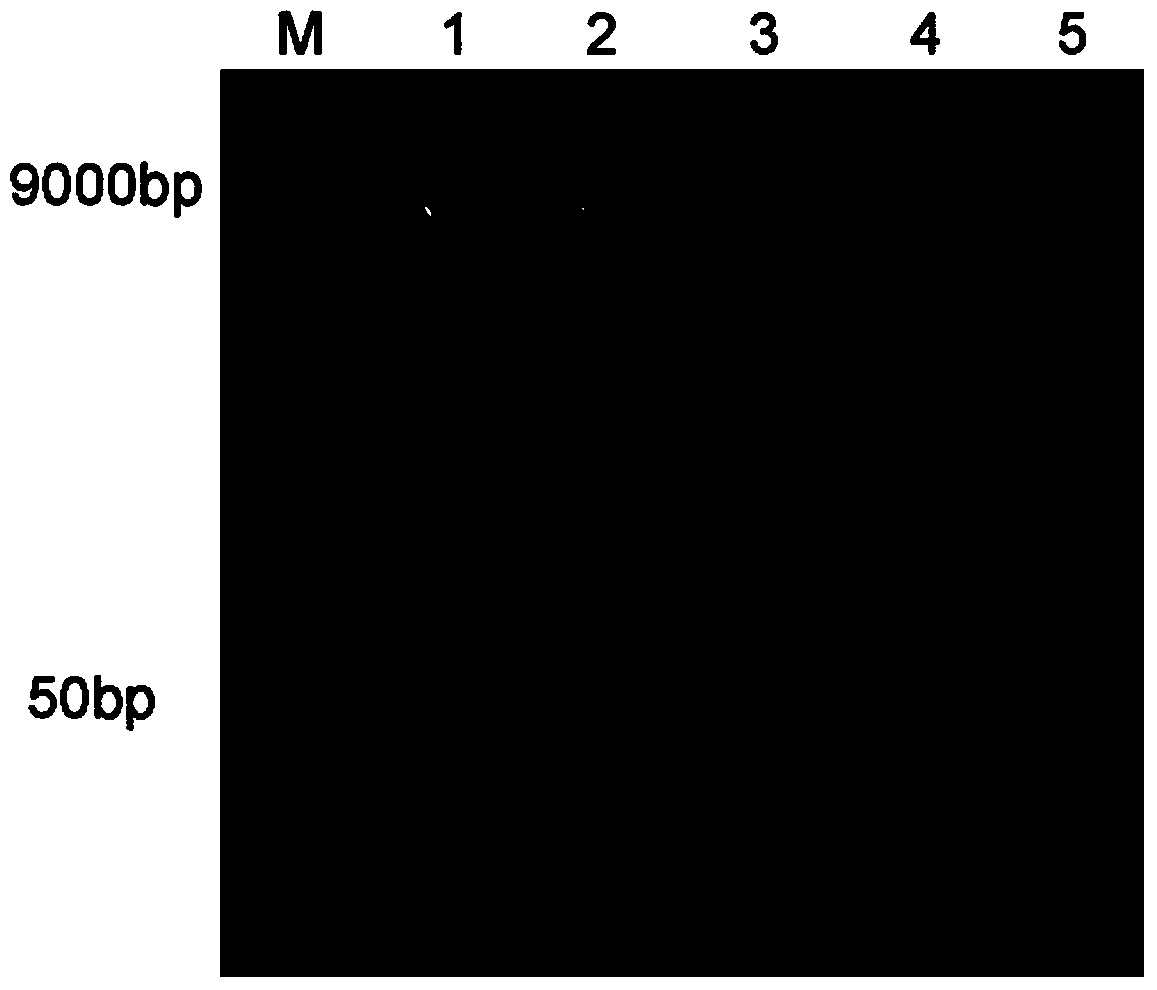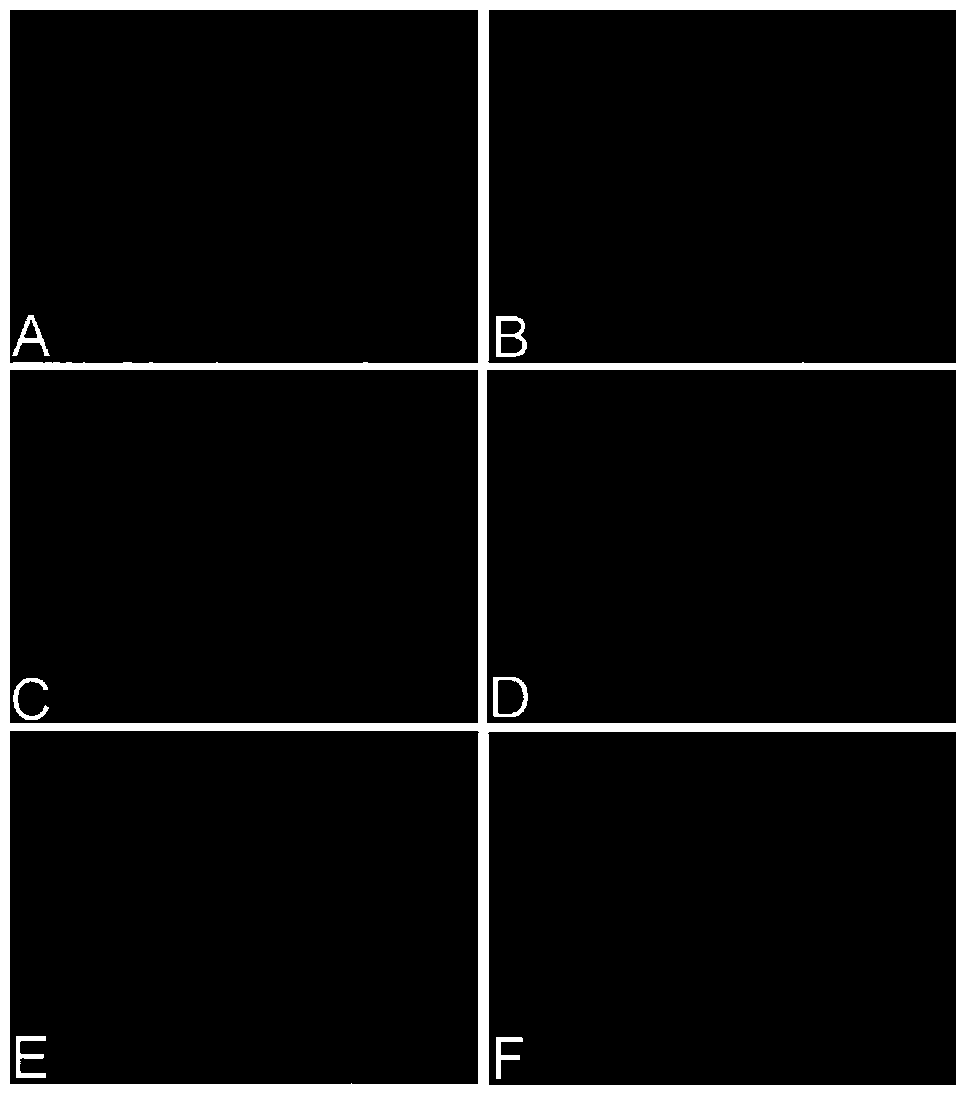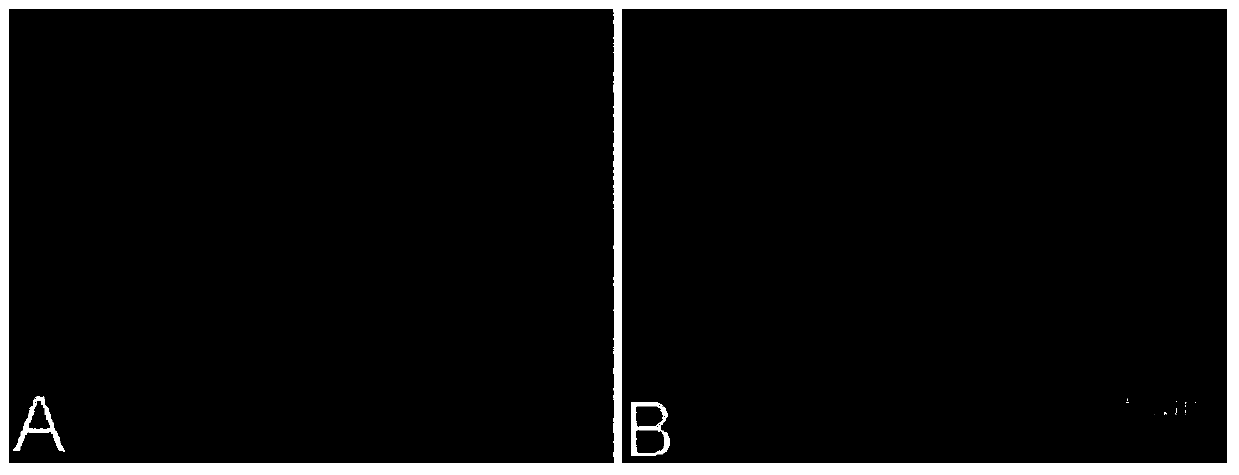Six2 genetic expression-inhibiting shRNA, lentiviral expression vector and construction method of lentiviral expression vector
A technology of lentiviral vector and gene expression, applied in the field of shRNA, lentiviral expression vector and its construction
- Summary
- Abstract
- Description
- Claims
- Application Information
AI Technical Summary
Problems solved by technology
Method used
Image
Examples
Embodiment 1
[0034] Design and entrust Shanghai Sangon Bioengineering Co., Ltd. to synthesize the interference sequences targeting Six2 as follows:
[0035] shSix2-1:Forward:5'-GATCCG CCAAGGAAAGGGAGAACAA TTCAAGAGATTGAACTCCCTTTCCTTGGTTTTTCG-3' (SEQ ID NO. 1);
[0036] shSix2-2:Forward:5'-GATCCG GCTACTGCTTCAAGGAAAA TTCAAGAGATTTTCCTTGAAGCAGTAGCTTTTTCG-3' (SEQ ID NO. 2);
[0037] shSix2-3:Forward:5'-GATCCG GAATGAAAGCGTGCTCAA TTCAAGAGATTGAGCACGCTTTTCATTCTTTTTTCG-3' (SEQ ID NO. 3);
[0038] shSix2-4:Forward:5’-GATCCG CAGCCAACCTCGTGGACCT TTCAAGAGAAGGTCCACGAGGTTGGCTGTTTTTCG-3' (SEQ ID NO. 4);
[0039] shSix2-5:Forward:5'-GATCCG GCAACTTCCGCGAGCTCTA TTCAAGAGATAGAGCTCGCGGAAGTTGCTTTTTCG-3' (SEQ ID NO. 5).
[0040] Control group Forward:: 5’GATCCG GCAAGCTGACCCTGAAGTTCA TTTCAAGAGAATGAACTTCAGGGTCAGCTTGCTTTTTCG-3' (SEQ ID NO. 6).
[0041]The synthesized sequence was annealed to form double strands, and the carrier plasmid pLVX-EF1α-IRES-Puro digested with BamH I and EcoR I was used for liga...
Embodiment 2
[0043] Example 2 Packaging of lentivirus pLV-shSix2
[0044] 293T cells were cultured in DMEM medium containing 10% FBS, and virus transfection was performed when the cell density grew to about 60%. The vector plasmids and packaging plasmids pLP1 and pLP / VSVG (purchased from Clontech Company) that were successfully connected with the knockdown sequence were used Lipofectamine TM 2000 was transfected into 293T cells; the cell culture medium was collected on the 3rd day after transfection, and replaced with fresh medium; the cell culture medium was collected again on the 4th day, and the supernatants collected twice were mixed. Centrifuge the above medium at 1000 rpm for 5 min, discard the cell debris, and filter the supernatant into a 50 ml centrifuge tube using a PVDF filter with a pore size of 0.45 μm. Centrifuge again (4°C, 50 000rpm high-speed centrifugation), carefully discard the supernatant and dry it, add 100ul / 10cm culture dish to resuspend the virus pellet in DMEM (n...
Embodiment 3
[0045] Example 3 Determination of biological titer of lentivirus pLV-shSix2
[0046] Because the packaged virus does not contain luminescent protein, during the experiment, under the same experimental conditions, we packaged the lentivirus pLV-GFP carrying the GFP gene at the same time, and used this virus to measure the titer of the virus , and to verify the success of the virus infection. One day before titer determination, take a 96-well plate, according to 1×10 per well 5 The density of cells to inoculate 293T cells. Add polybrene to fresh complete medium to a final concentration of 8 μg / ml. Dilute the virus in a 10-fold gradient with a complete medium containing polybrene; pipette 10 μl of the virus dilution into the corresponding 96-well plate and place at 37°C, 5% CO 2 Cultivate in the incubator overnight, replace the medium with fresh complete medium after 8 hours, continue to cultivate in the incubator for 96 hours, and count the number of fluorescent cells with a ...
PUM
 Login to View More
Login to View More Abstract
Description
Claims
Application Information
 Login to View More
Login to View More - R&D
- Intellectual Property
- Life Sciences
- Materials
- Tech Scout
- Unparalleled Data Quality
- Higher Quality Content
- 60% Fewer Hallucinations
Browse by: Latest US Patents, China's latest patents, Technical Efficacy Thesaurus, Application Domain, Technology Topic, Popular Technical Reports.
© 2025 PatSnap. All rights reserved.Legal|Privacy policy|Modern Slavery Act Transparency Statement|Sitemap|About US| Contact US: help@patsnap.com



